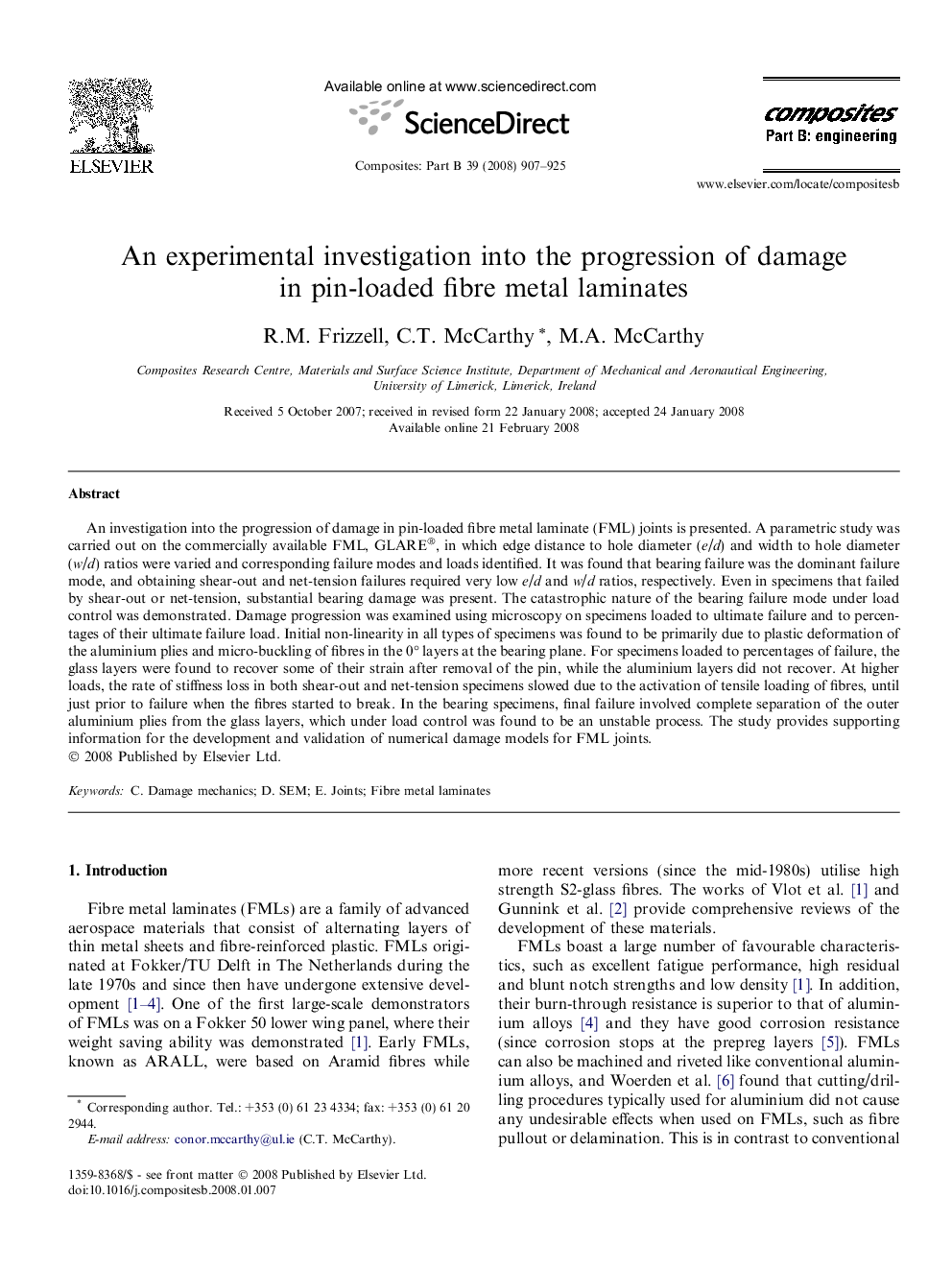| Article ID | Journal | Published Year | Pages | File Type |
|---|---|---|---|---|
| 819603 | Composites Part B: Engineering | 2008 | 19 Pages |
An investigation into the progression of damage in pin-loaded fibre metal laminate (FML) joints is presented. A parametric study was carried out on the commercially available FML, GLARE®, in which edge distance to hole diameter (e/d) and width to hole diameter (w/d) ratios were varied and corresponding failure modes and loads identified. It was found that bearing failure was the dominant failure mode, and obtaining shear-out and net-tension failures required very low e/d and w/d ratios, respectively. Even in specimens that failed by shear-out or net-tension, substantial bearing damage was present. The catastrophic nature of the bearing failure mode under load control was demonstrated. Damage progression was examined using microscopy on specimens loaded to ultimate failure and to percentages of their ultimate failure load. Initial non-linearity in all types of specimens was found to be primarily due to plastic deformation of the aluminium plies and micro-buckling of fibres in the 0° layers at the bearing plane. For specimens loaded to percentages of failure, the glass layers were found to recover some of their strain after removal of the pin, while the aluminium layers did not recover. At higher loads, the rate of stiffness loss in both shear-out and net-tension specimens slowed due to the activation of tensile loading of fibres, until just prior to failure when the fibres started to break. In the bearing specimens, final failure involved complete separation of the outer aluminium plies from the glass layers, which under load control was found to be an unstable process. The study provides supporting information for the development and validation of numerical damage models for FML joints.
